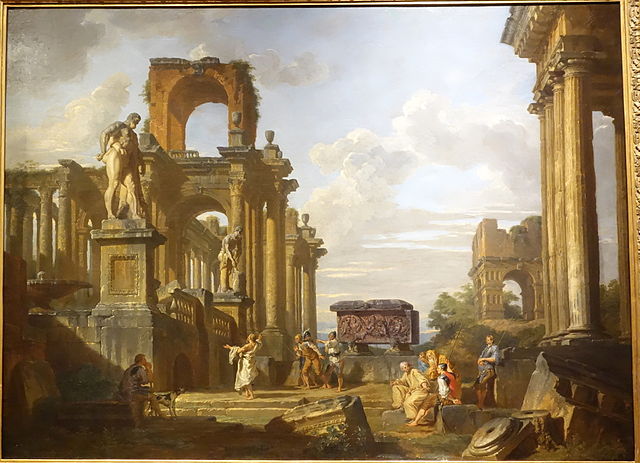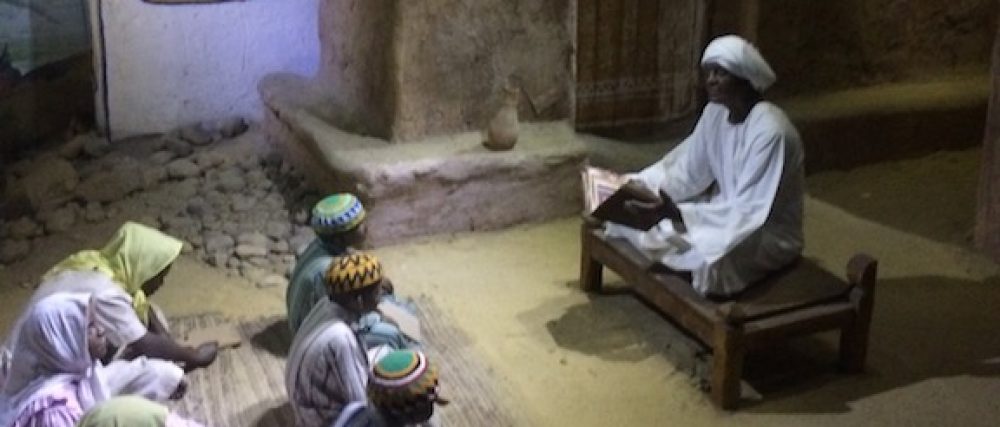In this post, I would like to revisit the notion of Naṣarā mentioned in Islam and the Ancient Mystery Schools (Part 5). If you recall, the results from our readings of Fadil al- Rabi’i’s were inconclusive. Upon further exploration, I have come across some information that has provided me a bit more perspective on who was intended by this term in the Quran. However, before we get into this exploration, let’s review some of the most compelling arguments espoused by Al-Rabi’i:
- Nasrani/Naṣarā is not a relative adjective describing a person from Nazareth. This means that the Naṣarā are not called as such solely on their affiliation with Jesus of Nazareth.
- The root of the word Naṣarā is related to the word meaning to be “uncircumcised.” This means that the Naṣarā were known for their opposition to or at least their ambivalence to the practice.
- In Muslim writings, the pre-Islamic Naṣarā were few in number and often associated with the Hanifs. This should make us ask: why do these few people warrant such attention in the Quran? If they were Christians, why didn’t they build a church? And why have they been historically classified as Hanifs?

I posit that the Naṣarā were a type of Hanīf or Sabian that was found in pre-Islamic Arabia. Most likely remnants of Neoplatonic Mysteries from the Roman Empire, who were dispersed into Asia Minor, Persia, Arabia, and the interior of Africa. More specifically, they probably considered themselves a priestly class of the Greater Mysteries who pontificated on a number of metaphysical matters of the day, which fomented much confusion in pre-Islamic times. Let’s first look at the historical links between the Mystery Schools of Rome and religion in pre-Islamic Arabia.
Christianity and the Mystery Schools
Christianity emerged in the Roman Empire as a reviled religion, with clear Semitic roots. It was opposed by the emperors because they were considered the ultimate legal and religious authorities. They believed that there was only one religion, the Mysteries. Different schools of the Mysteries had different expressions of it based on their culture and language because religion was associated with citizenship (Ando, 2021,13). Constantine, upon his conversion to Christianity in the early 4th century was the first Roman emperor to ease the repression of Christians in the empire. By the end of the century, Theodosious would make Christianity the official religion of the Roman Empire and commence the official closing of the Mystery Schools. Justinian would continue this project of closing the Mysteries in the 6th century. In turn, many of its die-hard members who refused to convert to the state religion fled to Asia Minor, like the city of Ḥarrān, Persia, the Arabian peninsula, and the interior of Africa (Errington, 2006, 249-52).
Quraysh and the Mystery Schools
As for those who fled to the Arabian peninsula, it is possible that the Quraysh tribe was one such group. Scholars are unsure of their exact origins, but some have proposed that they were one of the groups that who fled Byzantium. This would make sense since the Quraysh only emerge in the 5th century and appear to take over the most important shrine in Arabia (Ḍayf, 1960, 49). Furthermore, prior to the prophetic mission of Muhammad, the Quraysh exhibited traits common to followers of the Mysteries. First, the Dār al-Nadwa that managed the affairs of Mecca only allowed wealthy men over the age of forty. In the Mysteries, this age was significant because it represented the age at which men attained wisdom and the position of teacher and leadership. They were also learned in advanced mathematics because they set interest rates and performed the duties of bankers. Similarly, they were also the religious authorities because they controlled the rites of the pilgrimage to the Kaʿba, which they believed to be a Saturnalia shrine. For these reasons, it is likely that there was a substantial influence on the pre-Islamic Arabs from the Ancient Mystery Schools.
Naṣārā and the Mystery Schools
When we look into the Qur’an, we find numerous mentions of Naṣārā, but never of Masīḥiyīn, a more direct translation of the word Christians. I believe this was the case because Naṣārā actually referred to a group known as the Nāṣūrati or Nasoraeans, who scholars call a Jewish-Christian Gnostic sect that emerged during the post-Christian religious milieu in the Near East (Bladel, 2017, 6). However, they are more commonly associated with the Mandaeans of southern Iraq; the only group in the world commonly labeled Sabians. Members of their priestly class are called Nasoraeans, who assiduously guard the secret rituals and doctrines of the Mandaeans, which they perceive as having a more ancient origin. Much like the Mystery Schools, the Nasoraeans function as the Greater Mysteries that requires a much more rigorous training in the secret arts, while the rank-and-file Mandaean constitutes the Lesser Mysteries that is open to those who are inclined to Gnosticism. Their doctrine consists of a worshipful regard for angels and the stars and opposition to the practice of circumcision. Indeed, they are those that many Muslim jurists, historians, and theologians identified as the last visages of the Qur’anic Sabians.
Concluding Remarks
With the above understanding, we can gather that:
1) the Nasoraeans were around and active in the Near East before and during the time of the Prophet Muhammad
2) the Nasoraeans constitute a hybrid of the Ancient Mystery Schools and Judeo-Christian beliefs and practices
3) the Nasoraean’s minority status and secretive nature explains why no “Naṣrānī” church was established in the heart of Arabia
4) if the Naṣārā are the Nasoraeans, then this is cause to reconsider the identities of the Yahūd (or “those who became Jews”) and the Majūs
Linking the Naṣārā of the Qur’an to the Nasoraeans of the Mandaean religion will introduce us to a different way of understanding certain arguments put forth in the Qur’an. I will show in future posts how verses that discuss the angels and pre-Islamic ideas about nature and prophethood are actually a polemic against the positions of the Nasoraeans. In addition, we will see that the Qur’an’s criticism of other religions is based on the degree to which they adopted beliefs associated with the Nasoraeans and other Sabians, which were remnants of the Ancient Mystery Schools in Islamic lands. The Naṣārā who were deemed as Christians were those who were closer to the Ḥanīfs in their beliefs. Not only will we witness the historical implications of this information, but we will begin to see how these doctrines continue to shape the current religious discourse.
References
Ando, Clifford. “Religious Affiliation and Political Belonging from Cicero to Theodosius.” Acta Classica, vol. 64, no. 1, 2021, pp. 9–28. https://doi.org/10.1353/acl.2021.0013.
Bladel, Kevin Thomas Van. From Sasanian Mandaeans to Ṣābians of the Marshes. Brill, 2017.
Ḍayf, Shawqi. Al-ʿAṣr al-Jāhilī. 11th ed., vol. 1, Dār al-Ma’ārif, 1960.
Errington, R. M. Roman Imperial Policy from Julian to Theodosius. University of North Carolina Press, 2006.

Pingback: Islam and the Ancient Mystery Schools (Part 11) | The Maurchives
Pingback: Is God the Universe? | The Maurchives